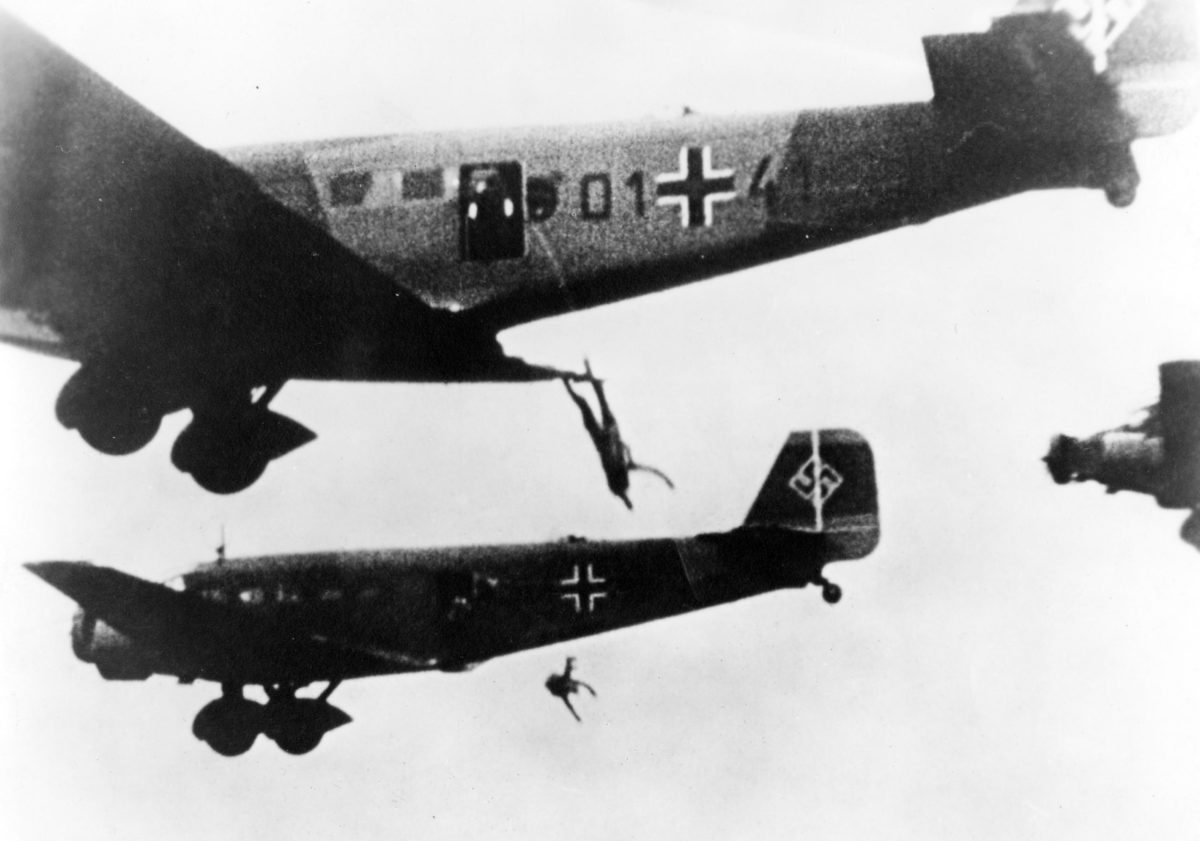Airborne warfare has and continues to be a subject of fascination among military history enthusiasts, with airborne troops of the Second World War — such as men of Britain’s Parachute Regiment or the U.S. 82nd Airborne, for example — achieving legendary status. Airborne warfare was indeed undergoing a renaissance during World War II, with many nations seeking to train and launch “sky warriors” into action.
Authors Simon and Jonathan Forty examine this renaissance in detail in “A Photographic History of Airborne Warfare: 1939-1945.” The book’s simple title belies its rich substance. It not only chronicles the history of the war’s airborne operations, but gives readers detailed insights into training, equipment, vehicles, techniques and methods of airborne troops of the many nations involved in the global conflict.
“The airdrop required the true daredevil air warrior — someone tough, resourceful and confident enough to fight behind enemy lines and crazy enough to jump out of aeroplanes in the first place,” the authors note, adding: “All the paratroop units of the different nations began with completely voluntary recruitment appealing to this kind of fighter.”
GET HISTORY’S GREATEST TALES—RIGHT IN YOUR INBOX
Subscribe to our HistoryNet Now! newsletter for the best of the past, delivered every Monday and Thursday.
Of particular interest is the genesis of airborne warfare itself. The authors chart its developmental spark from Soviet Russia’s VDV (Vozdushno-desantnye voyska) during the 1930s to further elaboration by the Germans, who took the concept to a new level with their training and use of Fallschirmjäger troops.
The author’s insights into the techniques of Fallschirmjäger make for interesting reading. One particularly intriguing fact is that, in contrast to other airborne troops, the German paratroopers dove headfirst from aircraft, outfitted with elbow pads and knee pads. This is due to the fact that they relied on backpack parachutes and static line deployment — or, in German, Zwangablösung, meaning “forced detachment.”
These “storm of steel”-style swan dives were great fodder for Nazi propaganda, but did nothing to avert the ghost of failure that stalked the Fallschirmjäger following the mauling they sustained at the Battle of Crete in 1941. The ill-fated Unternehmen Merkur, or Operation Mercury, is described by the authors in great detail and is given its due as a turning point in the evolution of airborne operations.
“The German attack unfolded as an almost complete disaster as the failure of [Kurt] Student’s piecemeal ‘oil-drop’ tactics — a widespread drop in small numbers rather than an overwhelming concentration — was laid bare,” they write.
The ambitious operation was the first in which airborne troops were deployed en masse — and, taking a dim view of the results, Adolf Hitler determined it was something the Germans would never do again. Observing the outcome, the Allies however became better-informed about how to conduct airborne operations and made their own determinations to craft airborne forces.
Meticulously weaving together chronological accounts with wartime photos, excerpted operational notes, maps and in-depth views of gear and techniques, “A Photographic History of Airborne Warfare: 1939-1945” is a definitive guide to its subject matter and should be in the libraries of readers interested in World War II history.
historynet magazines
Our 9 best-selling history titles feature in-depth storytelling and iconic imagery to engage and inform on the people, the wars, and the events that shaped America and the world.






